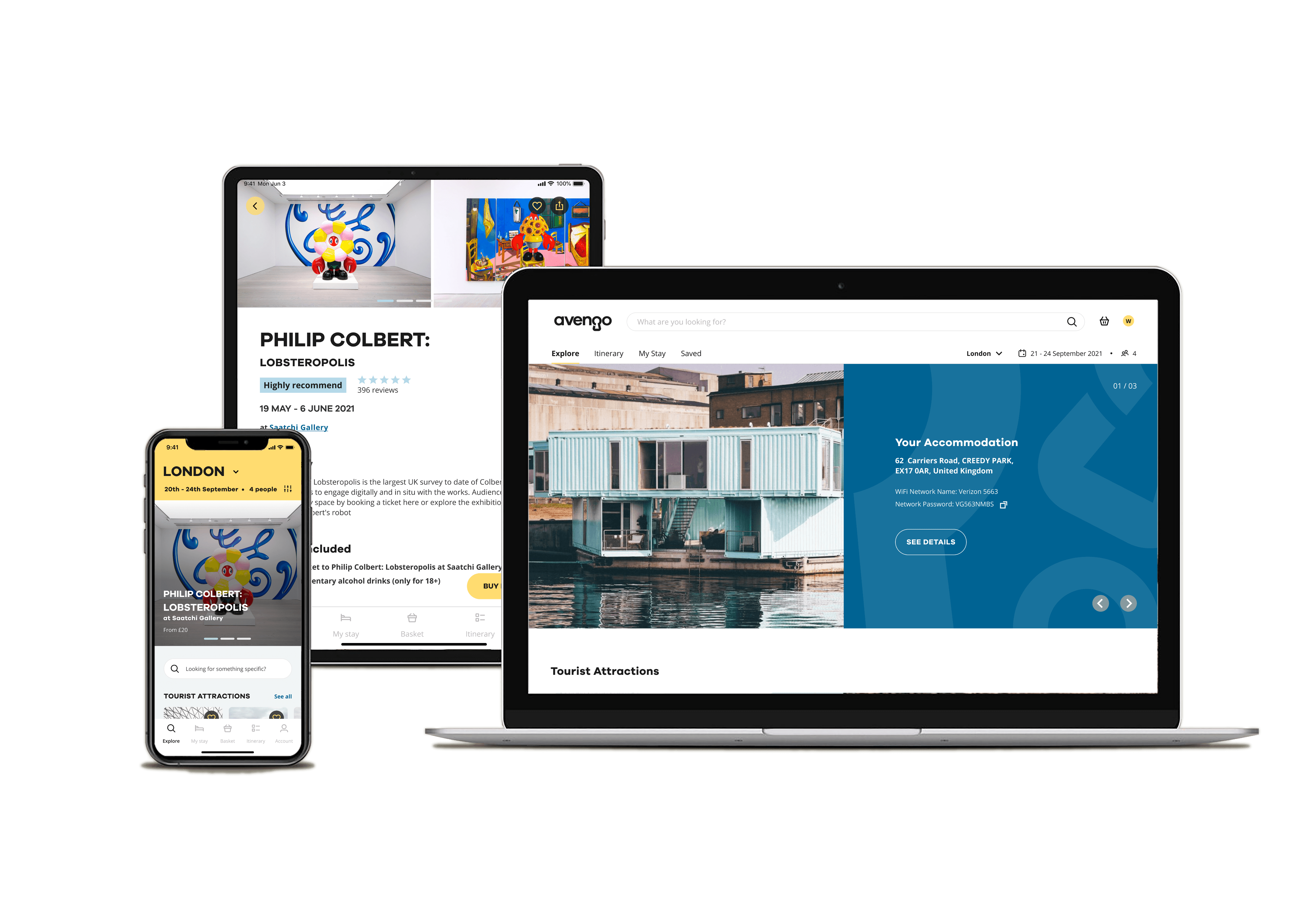Transforming
Hospitality Operations:
A Scalable Digital
Strategy for Ennismore
Hospitality
Consumer Goods & Social Impact
Consumer Goods & Social Impact
Hospitality
Internal
B2C
B2C
Internal


About The Project
About The Project
About The Project
Overview
Ennismore, a global hospitality collective faced significant operational software challenges due to rapid expansion and ongoing acquisitions. Their existing CMS tool initially a temporary solution, lacked key features and scalability. To support this transformation, they needed an integrated self-service SaaS solution to replace outdated software and streamline operations across their brands.
Overview
Ennismore, a global hospitality collective faced significant operational software challenges due to rapid expansion and ongoing acquisitions. Their existing CMS tool initially a temporary solution, lacked key features and scalability. To support this transformation, they needed an integrated self-service SaaS solution to replace outdated software and streamline operations across their brands.
Overview
Ennismore, a global hospitality collective faced significant operational software challenges due to rapid expansion and ongoing acquisitions. Their existing CMS tool initially a temporary solution, lacked key features and scalability. To support this transformation, they needed an integrated self-service SaaS solution to replace outdated software and streamline operations across their brands.
Business Incentives
Before initiating the project, we aligned with Ennismore’s strategic objectives to ensure our approach directly supported their operational and scalability goals. The primary objective was to develop a self-service SaaS solution that empowers hotel teams to manage their booking engine independently, reducing reliance on developers and streamlining operations.
To measure success, the project focused on the following key results:
Deliver a Back Office Tool that enables self-service booking engine management.
Launch the first iteration of the Back Office Portal in Q4 2023.
Ensure 90% of booking engine content changes are completed via self-service.
Achieve X% of new hotel openings onboarded via self-service, with minimal developer support.
Key Challenges
Lack of guest history tracking for personalised experiences.
Inefficient customer support throughout the booking journey.
Inability to track booking journeys, limiting data collection and performance insights.
High development and maintenance costs due to manual onboarding processes.
Approach
Approach
Approach
Align Stakeholders Through Workshops
Placing users at the heart of our efforts, we conducted extensive user research across multiple departments—including content managers, revenue teams, developers, and IT—to understand operational needs and pain points.
Align Stakeholders Through Workshops
Placing users at the heart of our efforts, we conducted extensive user research across multiple departments—including content managers, revenue teams, developers, and IT—to understand operational needs and pain points.
Align Stakeholders Through Workshops
Placing users at the heart of our efforts, we conducted extensive user research across multiple departments—including content managers, revenue teams, developers, and IT—to understand operational needs and pain points.



Mapping the Ecosystem & Onboarding Service Blueprint
To ensure long-term scalability, we developed an ecosystem map that assessed software dependencies and integration limitations. The Onboarding Service Blueprint outlined the planning, configuration, API integration, and testing process, allowing structured growth. Through this, we identified areas where automation could streamline workflows, reducing manual onboarding costs. Additionally, we established an operational flow that evaluated software dependencies and highlighted key limitations that needed to be addressed for future scalability.
Mapping the Ecosystem & Onboarding Service Blueprint
To ensure long-term scalability, we developed an ecosystem map that assessed software dependencies and integration limitations. The Onboarding Service Blueprint outlined the planning, configuration, API integration, and testing process, allowing structured growth. Through this, we identified areas where automation could streamline workflows, reducing manual onboarding costs. Additionally, we established an operational flow that evaluated software dependencies and highlighted key limitations that needed to be addressed for future scalability.
Mapping the Ecosystem & Onboarding Service Blueprint
To ensure long-term scalability, we developed an ecosystem map that assessed software dependencies and integration limitations. The Onboarding Service Blueprint outlined the planning, configuration, API integration, and testing process, allowing structured growth. Through this, we identified areas where automation could streamline workflows, reducing manual onboarding costs. Additionally, we established an operational flow that evaluated software dependencies and highlighted key limitations that needed to be addressed for future scalability.









Defining User Needs & Standardisation
Extensive user research informed personas and Jobs-to-Be-Done (JTBD) frameworks, ensuring Directus met business and user needs. The focus was on simplifying content and pricing configurations for hotel revenue teams, eliminating inefficiencies and improving workflow.
Defining User Needs & Standardisation
Extensive user research informed personas and Jobs-to-Be-Done (JTBD) frameworks, ensuring Directus met business and user needs. The focus was on simplifying content and pricing configurations for hotel revenue teams, eliminating inefficiencies and improving workflow.
Defining User Needs & Standardisation
Extensive user research informed personas and Jobs-to-Be-Done (JTBD) frameworks, ensuring Directus met business and user needs. The focus was on simplifying content and pricing configurations for hotel revenue teams, eliminating inefficiencies and improving workflow.



Proposed Brief, User Story Mapping & MVP Strategy
The Proposed Brief highlighted challenges with the existing content configuration process, which required balancing backend pricing, frontend content inputs, and revenue team oversight. It emphasised the need for a standardised front-end system that minimises dependencies on the content team while enabling direct data entry by hotel revenue teams. To translate this into a structured approach, we conducted User Story Mapping to break down the onboarding journey and define the core user flows necessary for a seamless experience. This helped prioritise features for the MVP, which included a simplified pricing and content configuration module, customisable onboarding templates, and automated API setup to streamline hotel activation. The resulting strategy focused on building a scalable internal tool—potentially a standalone SaaS solution—that empowered hotel teams to manage onboarding independently, significantly reducing development dependency while ensuring consistency across brands.
Proposed Brief, User Story Mapping & MVP Strategy
The Proposed Brief highlighted challenges with the existing content configuration process, which required balancing backend pricing, frontend content inputs, and revenue team oversight. It emphasised the need for a standardised front-end system that minimises dependencies on the content team while enabling direct data entry by hotel revenue teams. To translate this into a structured approach, we conducted User Story Mapping to break down the onboarding journey and define the core user flows necessary for a seamless experience. This helped prioritise features for the MVP, which included a simplified pricing and content configuration module, customisable onboarding templates, and automated API setup to streamline hotel activation. The resulting strategy focused on building a scalable internal tool—potentially a standalone SaaS solution—that empowered hotel teams to manage onboarding independently, significantly reducing development dependency while ensuring consistency across brands.
Proposed Brief, User Story Mapping & MVP Strategy
The Proposed Brief highlighted challenges with the existing content configuration process, which required balancing backend pricing, frontend content inputs, and revenue team oversight. It emphasised the need for a standardised front-end system that minimises dependencies on the content team while enabling direct data entry by hotel revenue teams. To translate this into a structured approach, we conducted User Story Mapping to break down the onboarding journey and define the core user flows necessary for a seamless experience. This helped prioritise features for the MVP, which included a simplified pricing and content configuration module, customisable onboarding templates, and automated API setup to streamline hotel activation. The resulting strategy focused on building a scalable internal tool—potentially a standalone SaaS solution—that empowered hotel teams to manage onboarding independently, significantly reducing development dependency while ensuring consistency across brands.

























